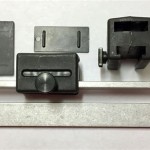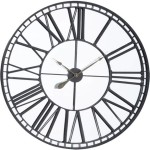How to Screen Mirror iPhone to an Old LG TV
Screen mirroring allows users to display the content of their iPhone on a larger screen, such as a television. This can be useful for various purposes, including watching videos, viewing photos, giving presentations, or playing games. While modern smart TVs offer built-in screen mirroring capabilities through protocols like AirPlay or Miracast, older LG TVs often lack this functionality. Therefore, connecting an iPhone to an older LG TV for screen mirroring requires alternative methods and potentially additional hardware.
This article provides a comprehensive guide on how to screen mirror an iPhone to an older LG TV, outlining different techniques, necessary equipment, and step-by-step instructions. The information provided aims to offer users a range of options suitable for varying technical skill levels and equipment availability.
Understanding the Compatibility Challenges
The primary challenge in screen mirroring an iPhone to an older LG TV lies in the absence of native wireless screen mirroring protocols. Older LG TVs, generally those manufactured before the widespread adoption of smart TV features, typically rely on older connection standards like HDMI, component, or composite inputs. These inputs are designed for receiving audio and video signals from external devices but do not inherently support wireless screen mirroring.
Apple devices, including iPhones, primarily utilize AirPlay for wireless screen mirroring. AirPlay requires a compatible receiver, typically built into modern smart TVs, Apple TV devices, or some third-party media streaming devices. Since older LG TVs lack native AirPlay support, alternative methods are required to bridge this compatibility gap.
The success of screen mirroring often depends on the availability of a stable Wi-Fi network. While some methods might bypass a direct Wi-Fi connection between the iPhone and the TV, a network is often needed for initial setup and configuration of intermediary devices. Assessing the network's stability and speed is crucial for a smooth screen mirroring experience.
Utilizing an HDMI Adapter
One of the most reliable and straightforward methods for screen mirroring an iPhone to an older LG TV involves using a wired connection via an HDMI adapter. This approach bypasses the need for wireless compatibility directly within the TV and instead relies on the universal HDMI input present on most older LG televisions.
The necessary equipment includes an Apple Lightning Digital AV Adapter or a USB-C Digital AV Multiport Adapter, depending on the iPhone model (Lightning for older iPhones, USB-C for newer iPhones). These adapters convert the iPhone's Lightning or USB-C output to a standard HDMI output. Additionally, an HDMI cable is required to connect the adapter to the LG TV's HDMI port.
To implement this method, the following steps should be taken:
- Connect the Lightning Digital AV Adapter or USB-C Digital AV Multiport Adapter to the iPhone's charging port.
- Connect one end of the HDMI cable to the HDMI port on the adapter.
- Connect the other end of the HDMI cable to an available HDMI port on the older LG TV.
- Turn on the LG TV and select the corresponding HDMI input source using the TV's remote control.
- The iPhone's screen should now be mirrored on the LG TV.
This method provides a direct and stable connection, minimizing latency and ensuring high-quality video and audio output. It does, however, require a physical connection, which may limit mobility and require careful cable management.
Employing a Media Streaming Device
Another effective approach is to use a media streaming device that supports screen mirroring and HDMI output. Devices like Google Chromecast, Roku, or Amazon Fire Stick can be connected to the older LG TV via HDMI and then used as intermediaries to receive and display the iPhone's screen content.
These devices connect to the TV via HDMI and to the home Wi-Fi network. The iPhone can then connect to the same Wi-Fi network and cast or mirror its screen to the media streaming device, which in turn displays the content on the LG TV.
Specific instructions for each device vary slightly:
Google Chromecast:
- Connect the Chromecast to an available HDMI port on the LG TV and power it on.
- Download and install the Google Home app on the iPhone.
- Follow the on-screen instructions in the Google Home app to connect the Chromecast to the Wi-Fi network.
- Once the Chromecast is set up, open the Control Center on the iPhone (swipe down from the top-right corner on iPhones with Face ID, or swipe up from the bottom on iPhones with a Home button).
- Tap the "Screen Mirroring" or "AirPlay" button.
- Select the Chromecast from the list of available devices.
- The iPhone's screen should now be mirrored on the LG TV via the Chromecast.
Roku:
- Connect the Roku device to an available HDMI port on the LG TV and power it on.
- Ensure the Roku device is connected to the same Wi-Fi network as the iPhone.
- On the iPhone, open the Control Center and tap the "Screen Mirroring" or "AirPlay" button.
- Select the Roku device from the list of available devices.
- If prompted, enter the AirPlay code displayed on the LG TV (via Roku) on the iPhone.
- The iPhone's screen should now be mirrored on the LG TV via the Roku device.
Amazon Fire Stick:
- Connect the Amazon Fire Stick to an available HDMI port on the LG TV and power it on.
- Ensure the Amazon Fire Stick is connected to the same Wi-Fi network as the iPhone.
- Download and install a screen mirroring app on the iPhone (e.g., AirScreen, AllCast).
- Open the screen mirroring app and follow its instructions to connect to the Amazon Fire Stick.
- The iPhone's screen should now be mirrored on the LG TV via the Amazon Fire Stick.
Using a media streaming device offers the advantage of wireless connectivity and often provides additional features, such as access to streaming services and apps. However, it relies on a stable Wi-Fi network and may introduce some latency depending on the network conditions and device performance.
Exploring Third-Party Apps and DLNA
While less common and potentially less reliable, some third-party apps offer screen mirroring functionality through DLNA (Digital Living Network Alliance) protocols or by creating ad-hoc wireless connections. These methods typically require downloading and installing a specific app on both the iPhone and potentially the LG TV (if it has any smart capabilities). However, most older LG TVs lack app installation capabilities, limiting the effectiveness of this approach.
Apps like AirBeamTV, MirrorMeister, or similar applications claim to offer screen mirroring to various devices, including older TVs. The effectiveness of these apps can vary significantly depending on the specific TV model, network configuration, and app quality. Users should exercise caution when using third-party apps, ensuring they are downloaded from reputable sources and understanding their privacy policies.
DLNA allows devices on the same network to share media content. Some apps may attempt to leverage DLNA to stream content from the iPhone to the LG TV. However, this typically involves streaming specific video or audio files rather than mirroring the entire screen. Also, older LG TVs may have limited DLNA support, requiring specific configuration and file format compatibility.
To attempt screen mirroring via a third-party app:
- Research and download a reputable screen mirroring app from the App Store.
- Follow the app's instructions to connect the iPhone to the LG TV. This may involve connecting to the same Wi-Fi network or creating an ad-hoc wireless connection.
- If the app requires installation on the LG TV, check if the TV has any smart capabilities and supports app installation. If not, this method may not be feasible.
- Test the connection and assess the performance. Be aware that performance can vary significantly depending on the app, network, and TV model.
This method is generally less reliable than using an HDMI adapter or a media streaming device, but it may be a viable option in certain situations where other methods are not feasible. Users should be prepared for potential compatibility issues, latency, and limited functionality.
When selecting a third-party app, it is crucial to read reviews and understand the app's capabilities and limitations. Some apps may offer limited functionality in their free versions and require a paid subscription for full access. Additionally, users should be aware of the potential for advertisements or in-app purchases.
These methods provide various solutions for screen mirroring an iPhone to an older LG TV. The choice of method depends on the user’s technical ability, budget, and desired level of performance and convenience.

Solved How To Mirror Iphone Lg Tv 2024

How To Mirror Iphone On Lg Tv

Use Airplay Mirroring On Lg Tv With Iphone Without Apple Here S How Redmond Pie
Lg Tv How To Use The Screen Share On A Usa Support

Solved How To Mirror Iphone Lg Tv 2024

How To Mirror Your Iphone Lg Tv Osxdaily
Lg Tv How To Use The Screen Share On A Usa Support

How To Mirror A Screen An Lg Tv

How To Mirror A Screen An Lg Tv

Screen Mirror Iphone To Lg Tv 3 Diffe Methods








